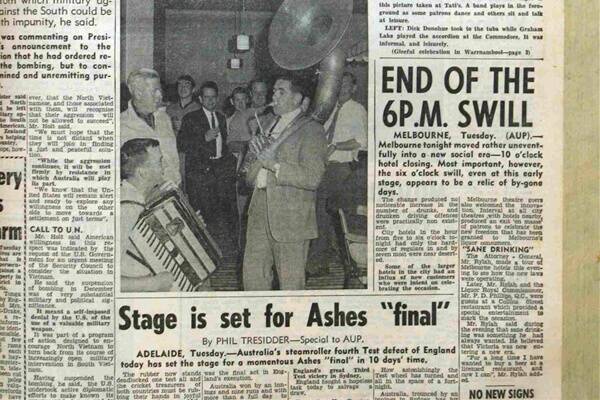
IN an age of nightclubs and late-night liquor licensing, it seems almost quaint that hotels had to close their bars even before the sun went down.
Subscribe now for unlimited access.
or signup to continue reading
Such was the cultural quirk of 1950s Australia when world-weary publicans had to yell “time gentlemen, please” to his group of male regulars.
The forced early closures stemmed from the multi-denominational temperance movement gaining the upper hand during World War I.
Victoria adopted the 6pm closing time in 1916, in line with most other Australian states, with the expressed intention of curbing alcohol consumption.
By the early 1960s, the “six o’clock swill” had become a byword for the failure of early closing hours.
Many workers would run from their workplace at 5pm, load up on beer and then spill rowdily into the streets at closing time before sunset.
Premier Henry Bolte, sensing a shift in public opinion, decided that Victoria should extend trading hours to 10pm by February 1966.
Warrnambool celebrated on the first night of late closing with fairy lights decked across the main streets, adding a touch of carnival atmosphere.
A “drink waiters derby” was held down Liebig Street, with dozens of men in black-tie balancing champagne bottles on trays.
Several pubs had live music with an impromptu brass band assembled at Tatts Hotel (now McDonald’s Central) while other venues played rock ’n’ roll records.
Premier Bolte said the move was a “commonsense approach” but warned revellers that new measures would also be in place to stop drink-drivers.
The state government introduced a .05 blood-alcohol rule on the same night as late closing, a measure that remains nearly five decades on.
* A series of these stories will feature in














